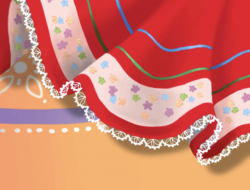The running joke in my high school German class was that people from Germany (or at least those pictured in our textbook) obsessively collected stamps, and we didn’t. Throughout the book, we watched Gerd and Brigitte go to the caf?, plan a party for their classmates, and take a city tour. While these activities sound bland, the two textbook characters inevitably spiced things up by dragging their stamp collection around with them everywhere.
While neither I nor any of my classmates collect stamps, we were mistaken in believing that no one else on the continent did either. If you still think that stamp collecting is extinct, there’s an entire museum solely dedicated to the history of stamps and the postal service ready and waiting to prove it to you.
Ready and waiting might be an understatement. I went to the museum on a Wednesday morning, a time I expected would be relatively dead. What I hadn’t expected, however, was that the place would be so empty that every museum employee and security guard would be able and willing to track me around the museum. One docent, noticing me wandering around the museum with pen and notebook in hand, asked me why I was taking the museum “so seriously.”
Though still undiscovered by most, this Smithsonian museum’s current exhibit on the history and production of stamps is worth a look. While stamp collecting hasn’t shown up on anyone’s to-do list in the last fifty years, President Franklin Delano Roosevelt, who helped design many stamps himself, claims that the hobby “helps dispel boredom, enlarges our vision, broadens our knowledge, makes us better citizens and in innumerable ways enriches our lives.”
While FDR might have been aiming a bit high, the large collection of stamps boasts a wide variety of artistic depictions including America’s history, scenery, arts and entertainment, flora and fauna, and more-so much more. The museum also displays a large collection of stamps from around the world.
Once the stamp has been commissioned, it takes at least two years for the stamp to be developed. While creating stamps is alluring to many artists due to their wide circulation, size constrictions make each piece more difficult-the artist can only work on a scale at most four times as big as an actual stamp.
The exhibit displays the museum’s national stamp collection and outlines the process involved in making “the silent ambassadors of national taste,” as W.B. Yeats describes these square-inch pieces of postage. In order to select these little ambassadors, the Citizen’s Stamp Advisory Committee meets quarterly to deliberate over the 50,000 some suggestions for new stamps each year. While it’s nothing to write home about, if you find yourself with some time to kill near Union Station or in dire need of overhead shelter, check out the National Postal Museum. Located directly across Massachusetts Avenue from the station, the museum is easily accessible by Metro’s Red Line. Be sure to go before snail mail is gone forever.
The National Postal Museum is located at 2 Massachusetts Ave., N.E. “Art of the Stamp” will be on view through Feb. 24, 2004. It is open seven days a week from 10 to 5:30. Admission is free.




